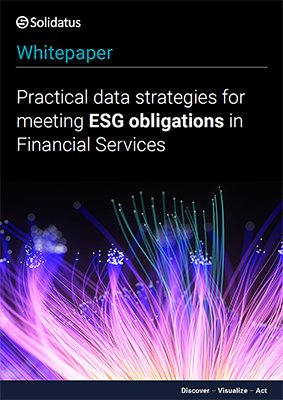
Practical Data Strategies for meeting ESG Obligations in Financial Services
The ESG investing landscape is poised to become more defined, as competing definitions, standards and regulatory initiatives start to converge. The impact of ESG will be felt far and wide across the financial services community, which will face practical challenges in developing and implementing an ESG strategy that is both effective and avoids box-ticking – thereby avoiding the risk of greenwashing.
Regulations already in play include the EU’s Sustainable Finance Disclosure Regulation (SFDR), with more being developed. The G7 group of leading industrialised nations recently issued a landmark statement in support of moving towards mandatory climate-related financial disclosures for companies, including the development of a consistent reporting standard based on the Task Force on Climate-related Financial Disclosures (TCFD), and the US Securities and Exchange Commission has just been tasked with developing a mandatory climate risk disclosure rule proposal.
Companies need to figure out how best to organise themselves to deliver on their obligations. Here, best practice suggests the development of an internal framework for identifying people and teams responsible for meeting ESG obligations; interpretation of rules and regulations to define the obligation; and defining the deliverable to meet the obligation.
The sophisticated integration capabilities of Solidatus can help with these challenges. Our lineage-first approach brings together ESG principles, company priorities, assessment methodologies and data sources and metrics to give a full end-to-end picture of the impact of ESG initiatives.
Download the whitepaper to find out more about:
- The ESG investing landscape and how best to respond to its major challenges
- Contextualising ESG initiatives and establishing organisational-wide understanding
- Building a successful ESG programme and refining a data strategy
- The benefits of a ‘lineage-first’ compliance solution

